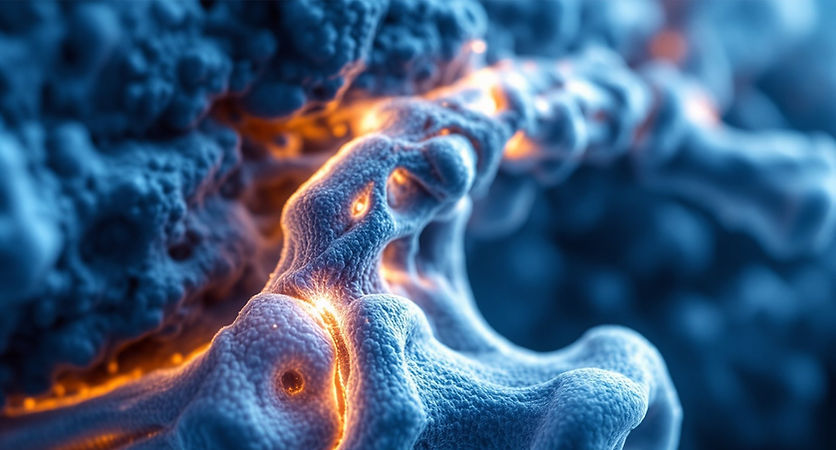
Innovative Gene Therapy for
Bone
Regeneration
Osteogenesis is a complex, multi-stage sequence of events that leads to the formation and restoration of bone tissue. Early on, the inflammatory response plays a pivotal role as a “danger signal,” mobilizing immune cells and preparing a favorable environment for subsequent processes. As the inflammation subsides, a variety of cellular and molecular mechanisms come into play: mesenchymal stem cells, growth factors (BMP, TGF-β, VEGF, etc.), osteoblasts, osteoclasts, and endothelial cells that form new blood vessels. The interplay and coordinated activity of these elements result in the synthesis and mineralization of the bone matrix, followed by further tissue remodeling. Ultimately, this orchestrated process produces mature, fully functional bone.
The project strategy also covers conditions in which physiological bone repair is inherently weak or pathologically altered—including osteogenesis imperfecta, skeletal dysplasias, osteoporosis, non- and delayed-union fractures, and pseudarthrosis. Under normal circumstances, when the fracture site has an adequate level of osteogenic stimuli and synthesizes enough structural proteins to form the bone matrix, the healing follows the classic pathway: hematoma → inflammation and debridement → soft (cartilaginous) callus → hard (bony) callus → remodeling into mature bone. If at any point regeneration is disrupted or follows a pathological course (e.g., due to inadequate fracture stabilization, insufficient production of growth factors, damaged blood supply), the defect area becomes occupied by fibrous or cartilaginous tissue that does not develop into a fully mineralized bony callus.
Genoterosil involves mitigation of the risks of pseudarthrosis and disability through several mechanisms. Firstly, it promotes enhanced osteoinduction: the addition of exogenous osteogenic signals accelerates the formation of a robust bone matrix, causing osteoblasts and mesenchymal stem cells to intensify bone tissue synthesis rather than fibrous tissue. Secondly, the drug augments the production of structural proteins: a high local concentration of collagenous components provides a “scaffold” that fortifies the bone and prevents its conversion into fibrous tissue. Thirdly, it improves the mechanical stability of the bone callus: when the bone matrix develops more rapidly and with greater quality, the fracture gains earlier primary stability, reducing micromotion and consequently the likelihood of pseudarthrosis. Finally, the product acts synergistically with conventional fracture stabilization methods: the additional delivery of osteogenic factors and structural proteins fosters optimal conditions for transforming fibrous or cartilaginous callus into bone, thus substantially lowering the risk of forming a false joint, which often leads to chronic pain, restricted mobility, and ultimately disability.
By ensuring a high concentration of pivotal regulators and bone matrix components, Genoterosil facilitates the timely initiation and proper progression of all stages of osteogenesis. As a result, it not only significantly shortens the time to fracture union and the patient’s duration of incapacity but also markedly reduces the chance of a pathological “stall” in the fibrous-tissue phase, thereby minimizing the risk of pseudarthrosis and disability.
